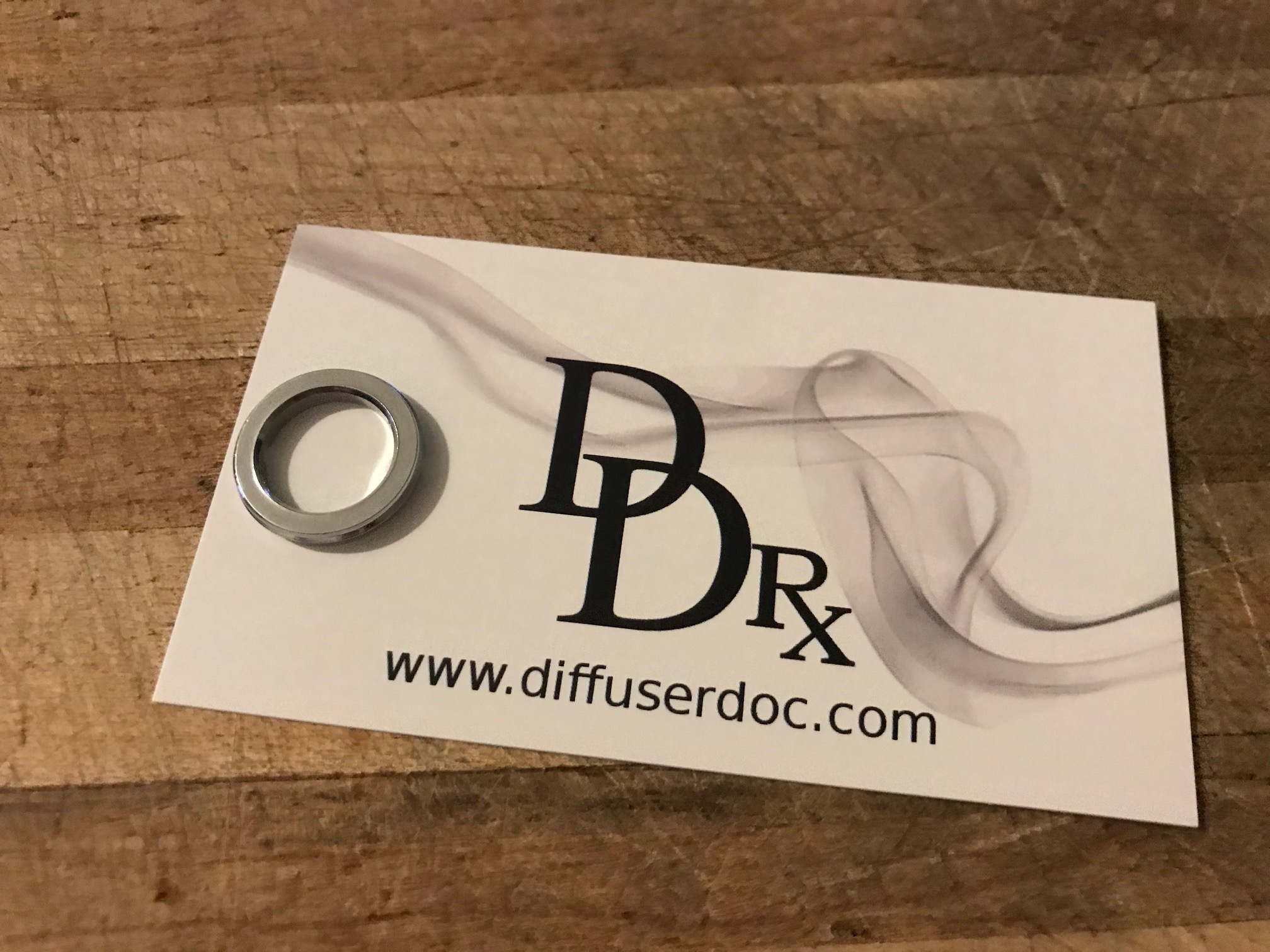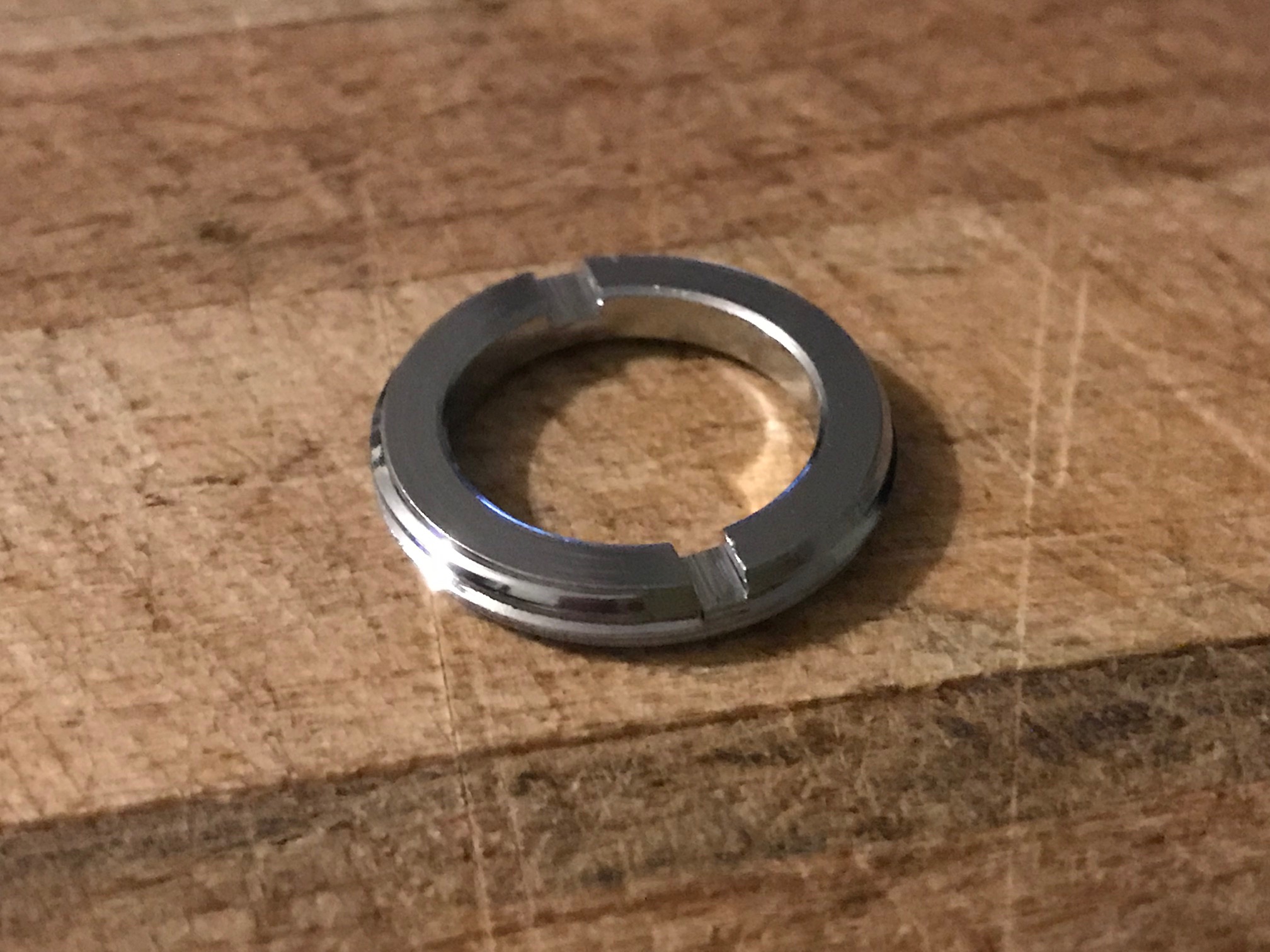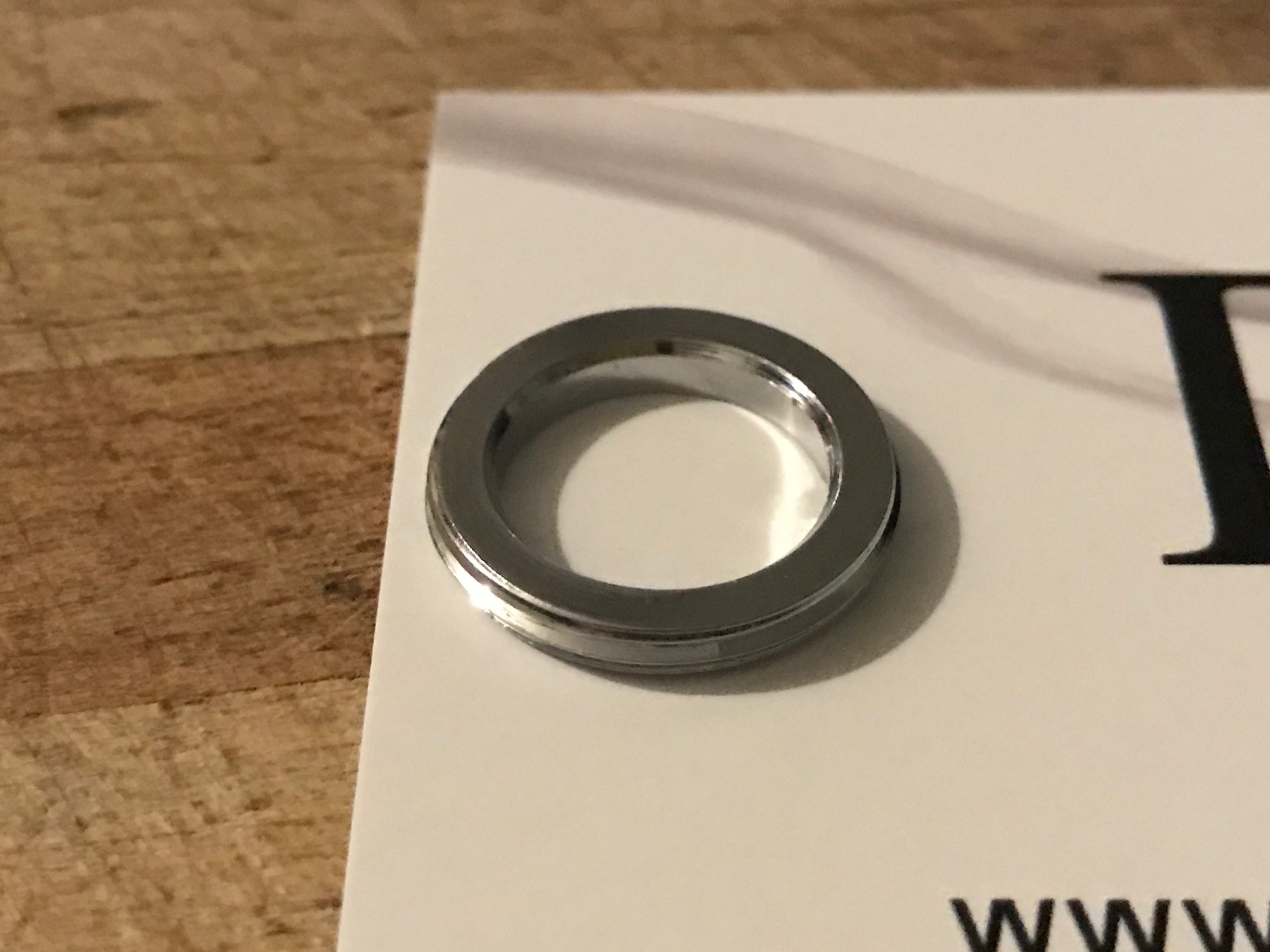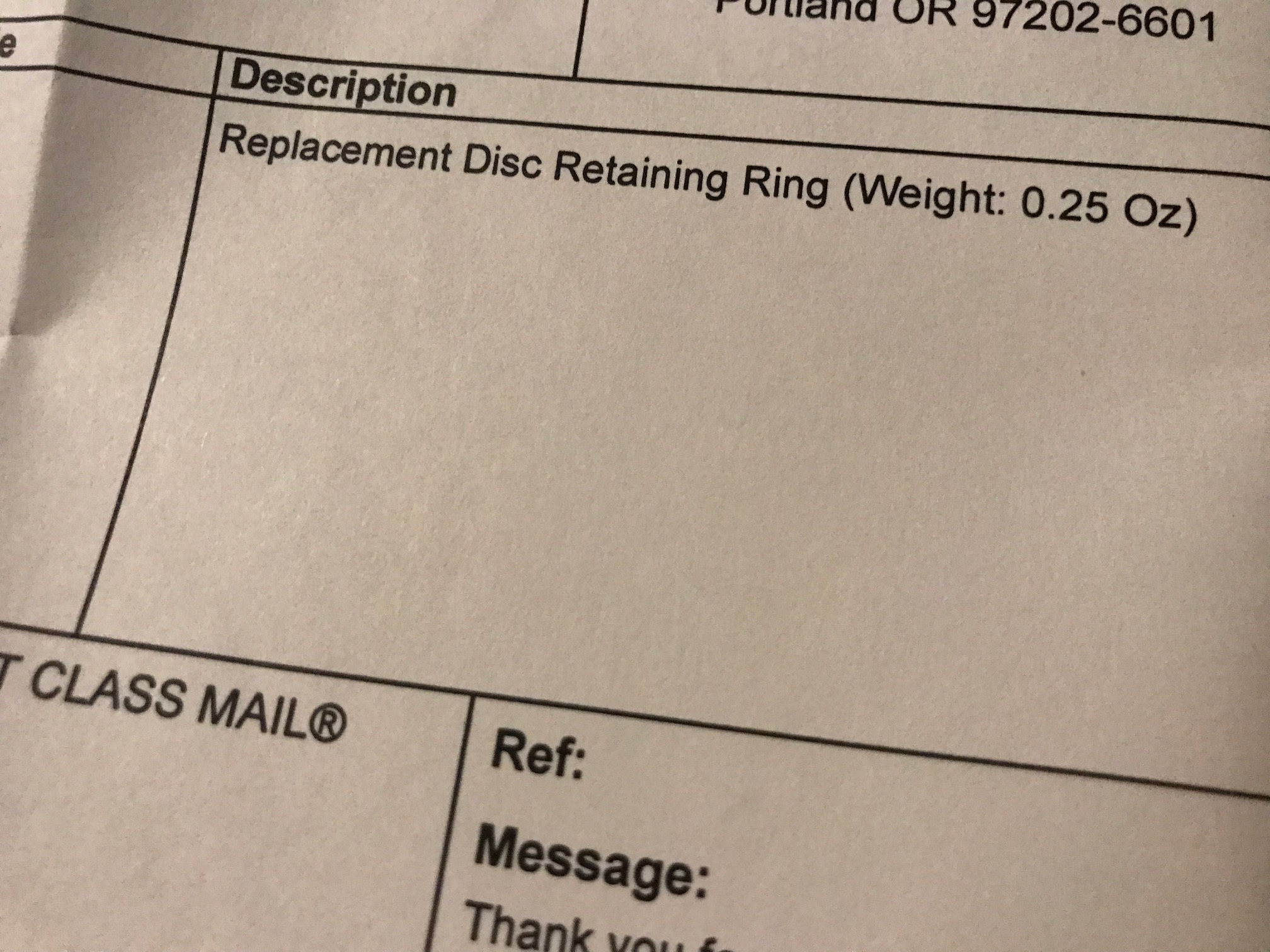Replacement Disc For Young Living & doTerra Essential Oil Diffusers: 33 ppm Lead (considered safe by all standards).
When tested with a high-precision XRF instrument, this tiny metal washer/disc (pictured here and below), was found to be positive for only trace levels of Lead (in contrast to the high levels of lead found in the comparable discs provided with the diffusers by the respective companies).The amount of Lead detected in the disc is considered safe by all standards.
For this small metal disc I did four sets of readings to confirm the results (on separate areas of the disc); two were positive for trace Lead and two were negative for trace Lead. With such a tiny trace amount of a toxicant bound in the metal, it is not unusual for some samples to be positive and others to be negative.
Here is an example of each type of reading:
Reading One (122 seconds):
- Lead (Pb): 33 +/- 10 ppm
- Arsenic (As): Non-Detect (negative)
- Mercury (Hg): Non-Detect (negative)
- Cadmium (Cd): Non-Detect (negative)
- Chromium (Cr): 1,418 +/- 49 ppm
- Selenium (Se): 210 +/- 12 ppm
- Tin (Sn): 257 +/- 14 ppm
- Zinc (Zn): 4,798 +/- 71 ppm
- Copper (Cu): 32,600 +/- 300 ppm
- Nickel (Ni): 4,533 +/- 57 ppm
- Iron (Fe): 104+/- 14 ppm
- Bismuth (Bi): 24 +/- 7 ppm
Continue reading below the image.
Reading Two (124 seconds):
- Lead (Pb): Non-Detect (negative)
- Arsenic (As): Non-Detect (negative)
- Mercury (Hg): Non-Detect (negative)
- Cadmium (Cd): Non-Detect (negative)
- Chromium (Cr): 3,607 +/- 89 ppm
- Selenium (Se): 115 +/- 26 ppm
- Tin (Sn): 534 +/- 23 ppm
- Zinc (Zn): 3,442 +/- 103 ppm
- Copper (Cu): 75,400 +/- 1,000 ppm
- Nickel (Ni): 14,400 +/- 200 ppm
- Iron (Fe): 106+/- 20 ppm
- Bismuth (Bi): 20 +/- 10 ppm
If you are new to this website and want to learn more about XRF testing, click here.
All test results that I report on this blog are accurate and replicable when using a high-precision XRF instrument designed for testing consumer goods. (Here’s more information about the specific instrument I use.)
This is a really interesting finding after the other findings I previously reported. Without destroying the piece it is hard to know why it is lower lead than the same piece provided by the manufacturers but here are some possible reasons:
- The entire piece is actually lower Lead.
- The Lead is just a contaminant of the chromed coating.
- The chrome coating is much thicker than the chrome coating on the original pieces from the manufacturer.
- The substrate under the chrome coating is not leaded brass (as it is in the comparable piece from the various other manufacturers.)
- A combination of some of all of the points above.
In any case I think this component is a much better choice (from a Lead perspective) than the ones provided by the manufacture. I would still like to see a piece that tests 100% negative for Lead with all readings, but this is a definite step forward.
It’s very frustrating to me that all of the manufacturers have responded relatively defensively instead of proactively addressing the problem, especially when my readers were able to quickly and easily find a much safer alternative available from a third party vendor [DiffuserDoc.com.]
To see more essential oil related products I have tested, click here.
To see a list of more things I have tested click here: https://tamararubin.com/2018/01/index/
As always, please let me know if you have any questions.
Thank you for reading and for sharing my posts.
Never Miss an Important Article Again!
Join our Email List







So this is essentially a ring that should be put in the Young Living diffuser to replace the existing one?
Hi Iva,
Yes – that is my understanding.
Tamara
Great analysis! Thank you so much for posting this.
Interesting story, we were unable to source these rings any longer, so after an exhaustive search, we had these rings custom made out of food grade 304 stainless steel. 🙂
I will send you a few samples for analysis.
-DiffuserDoc (Erik)